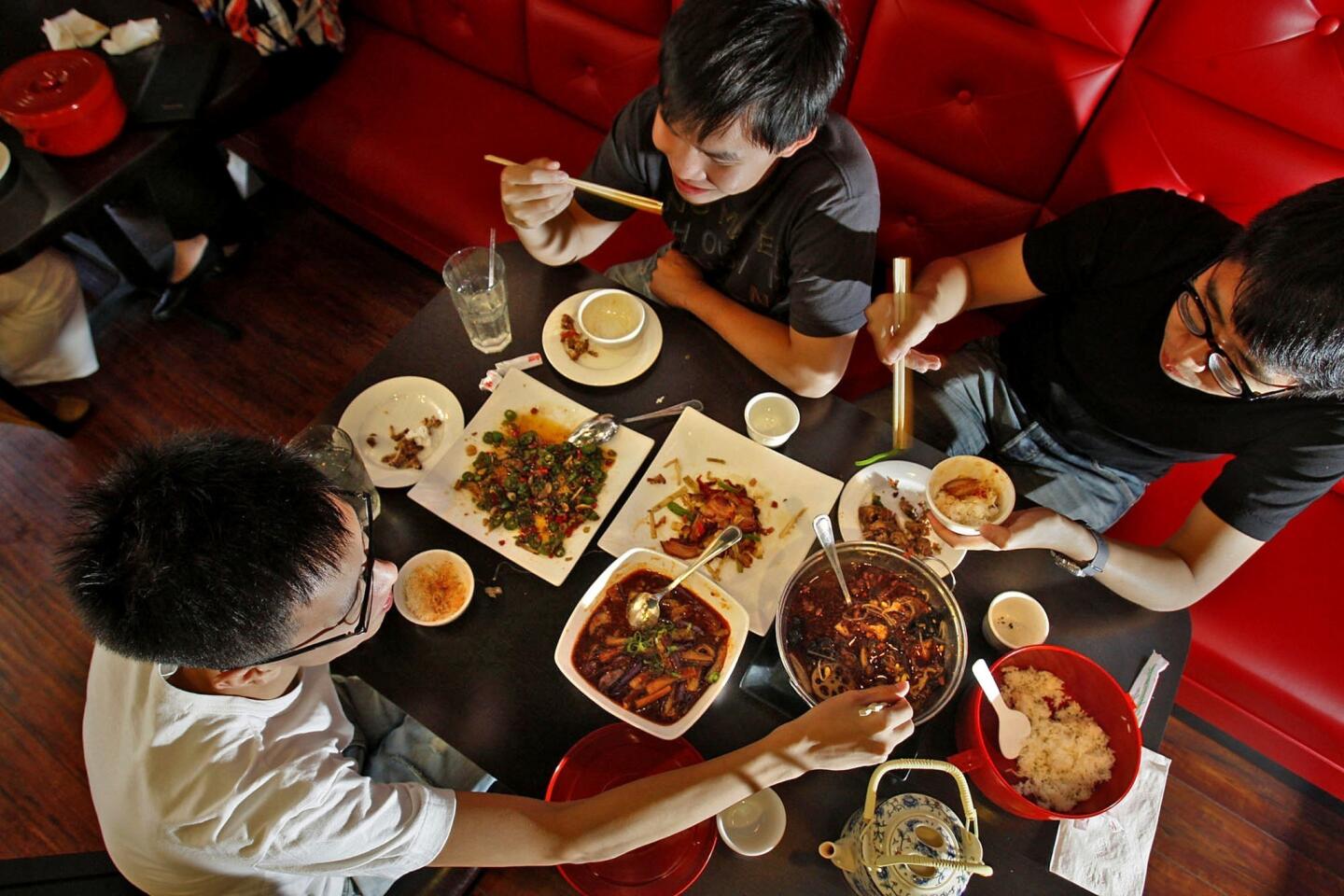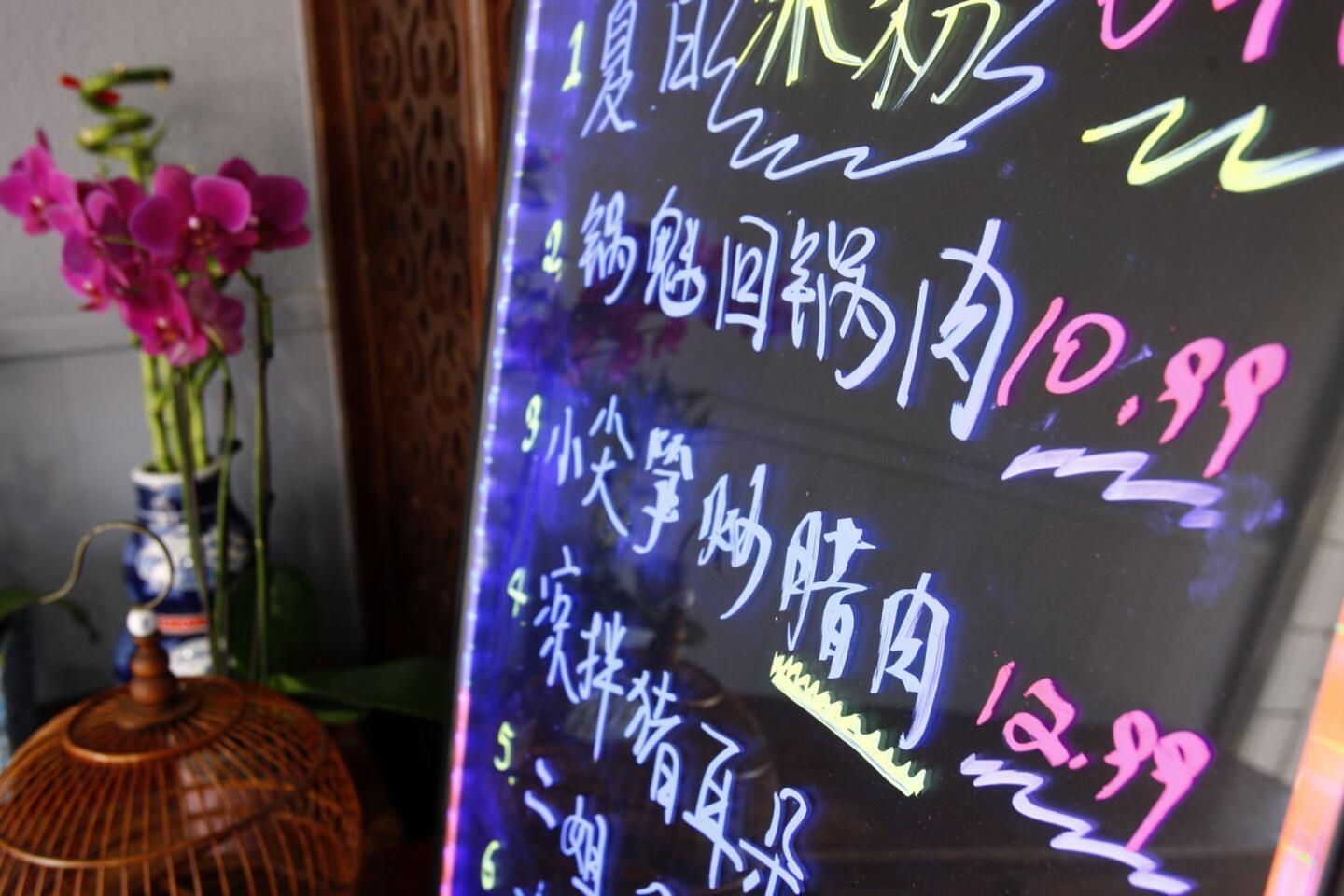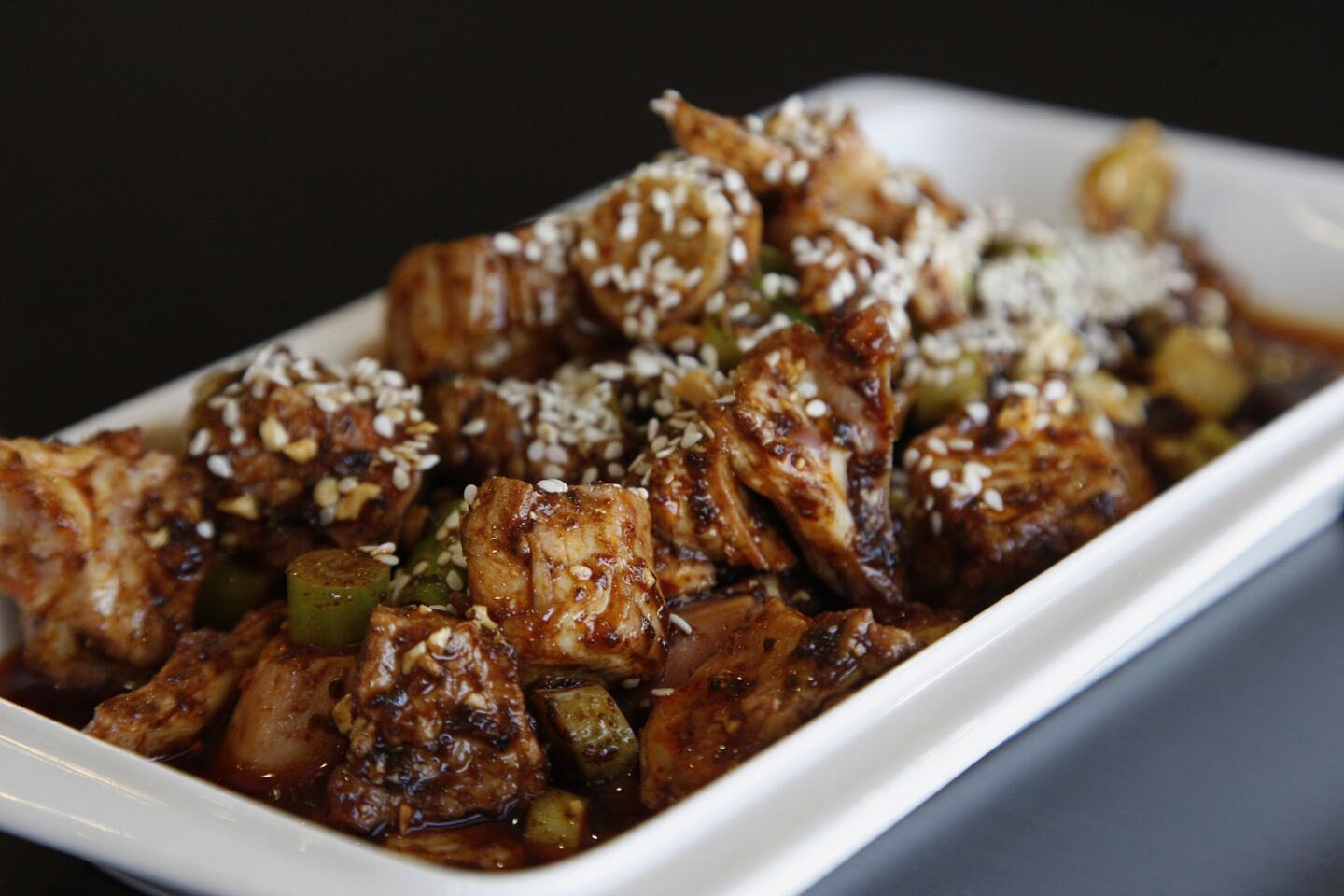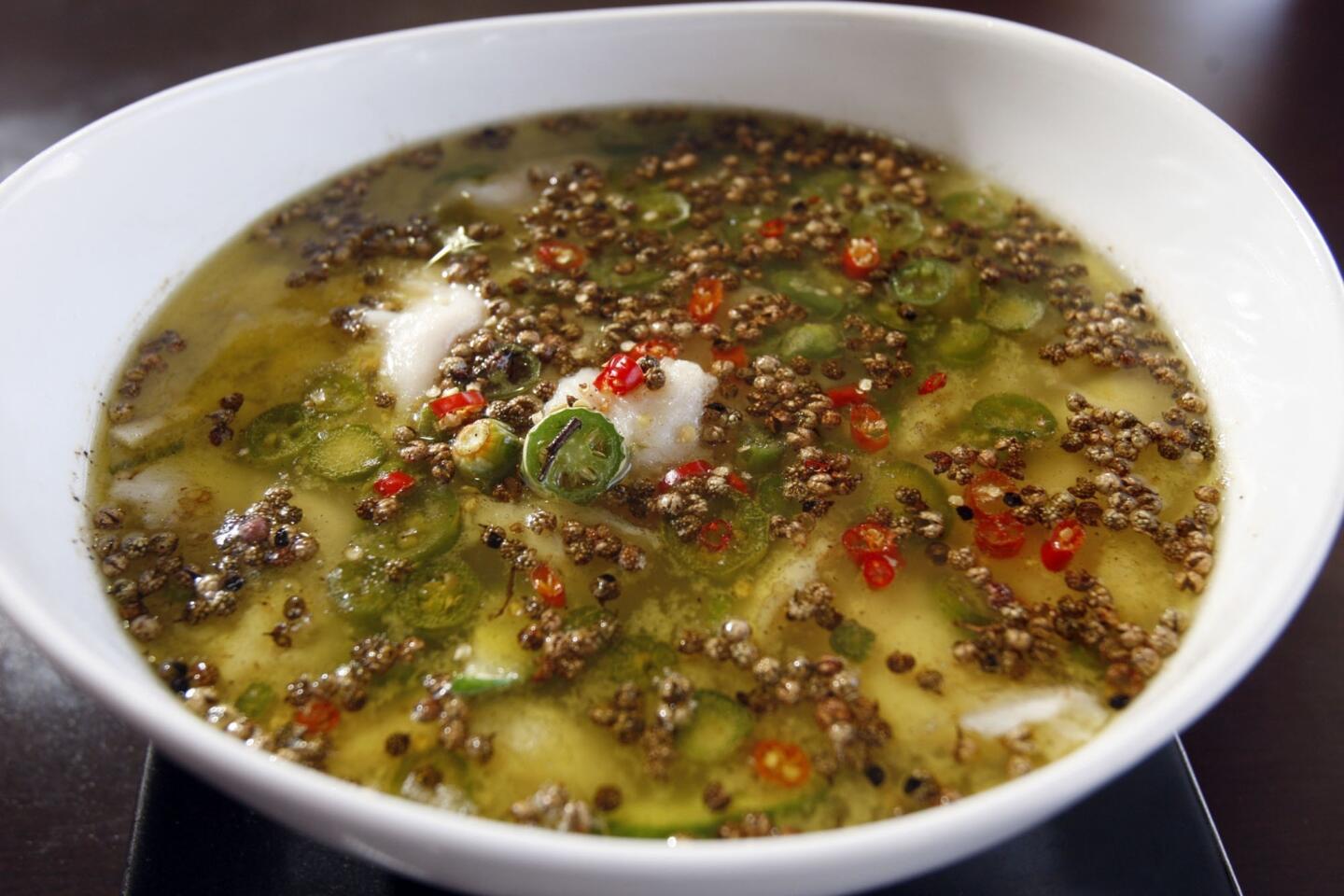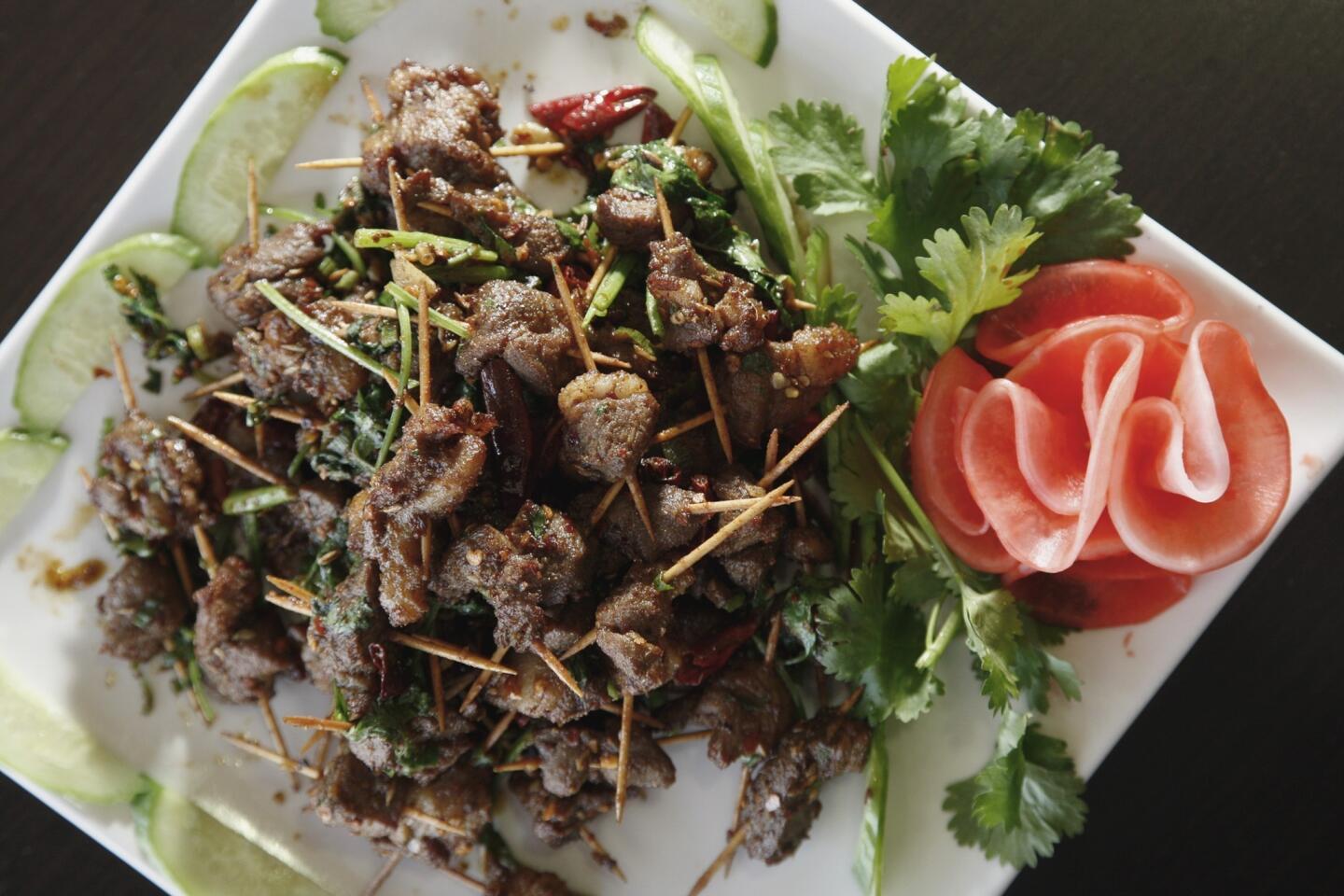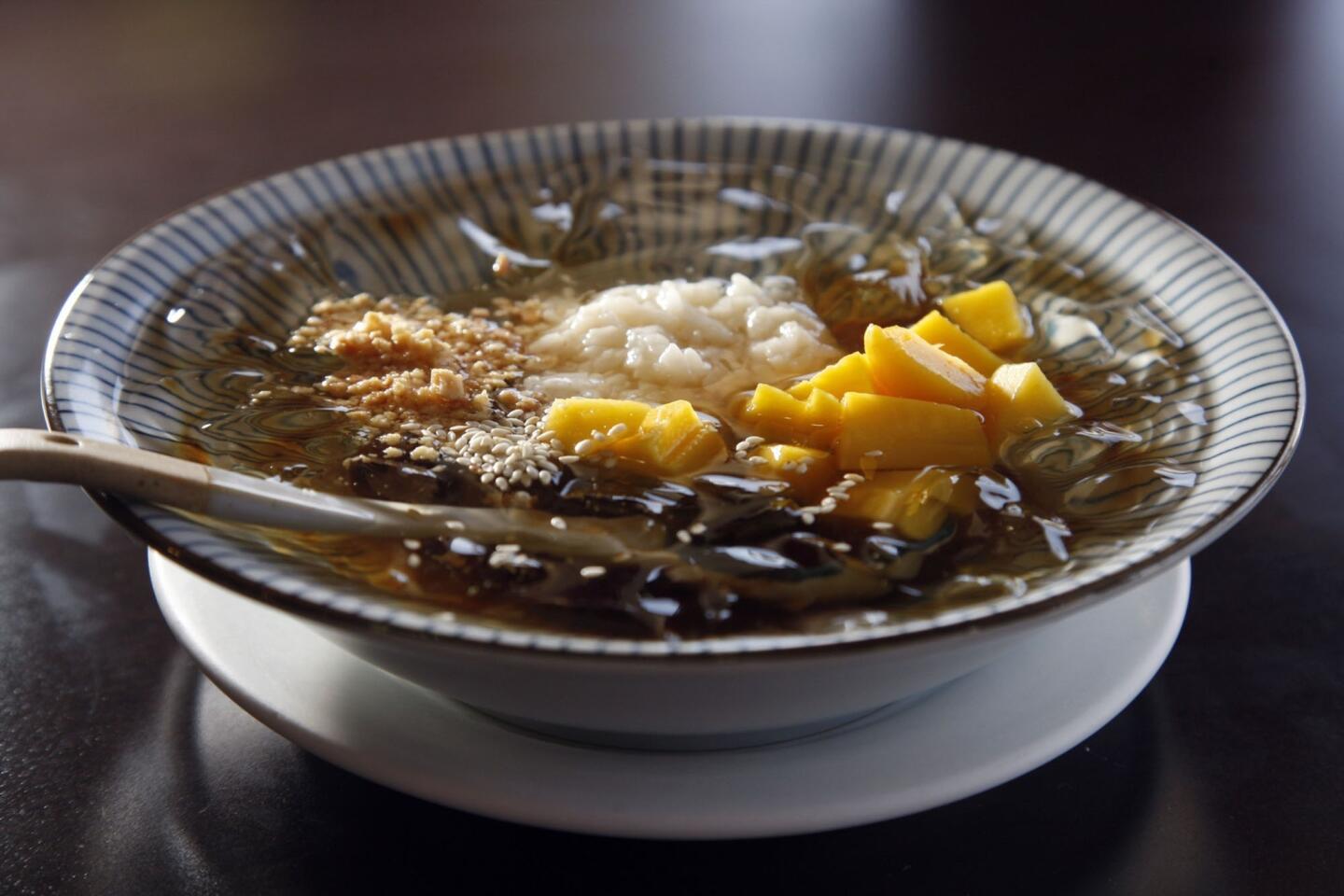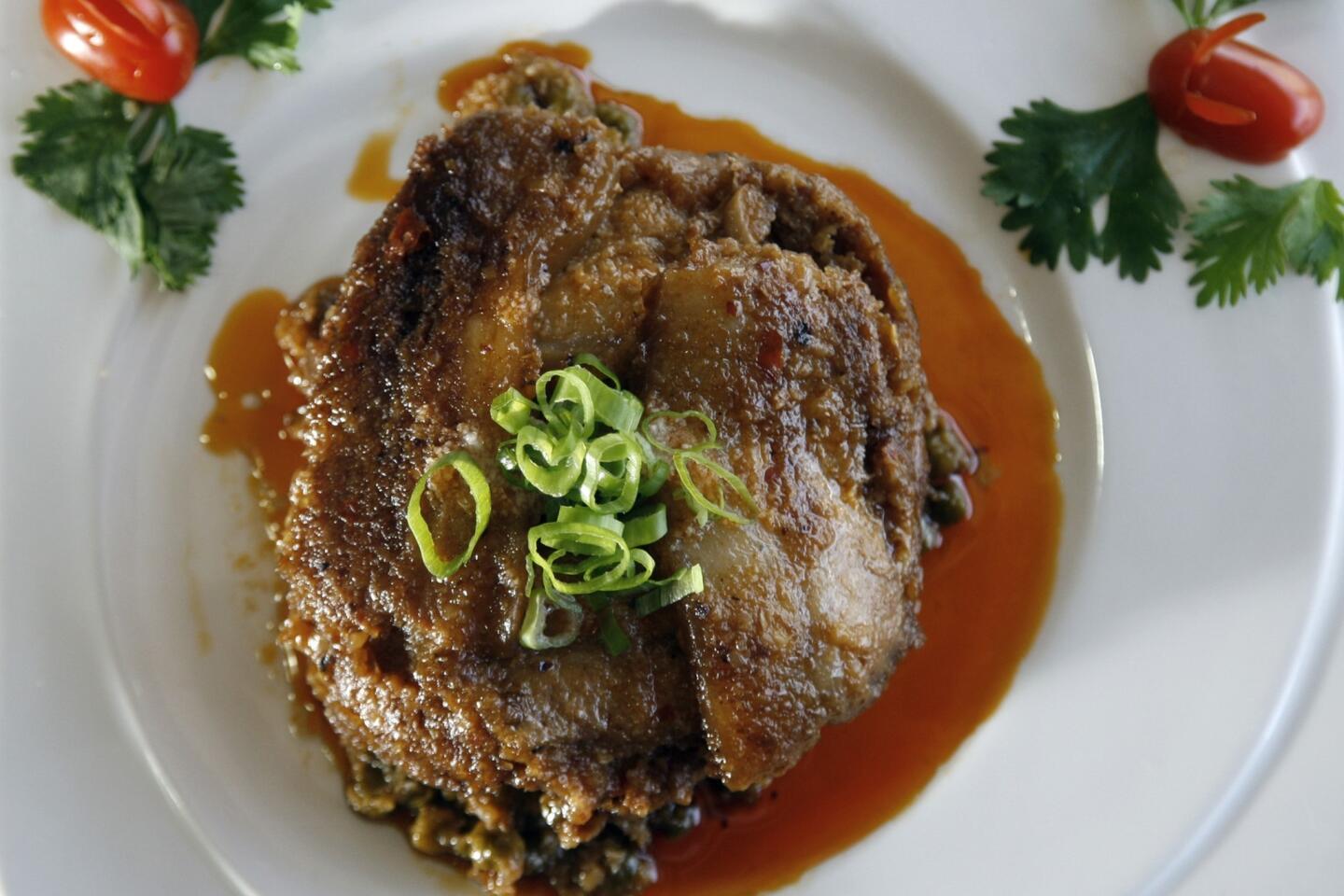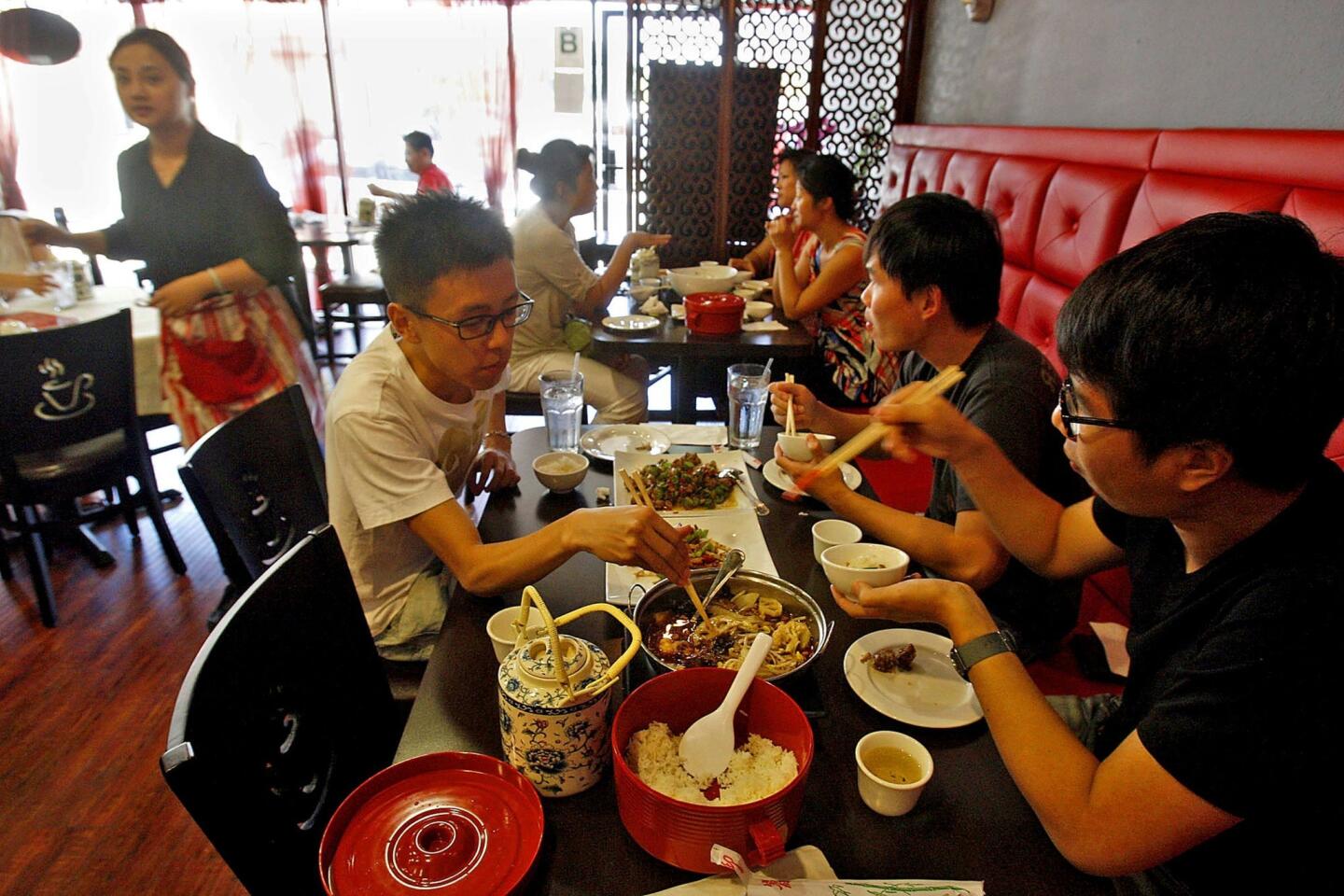Review: Chengdu Taste serves down-home Sichuan
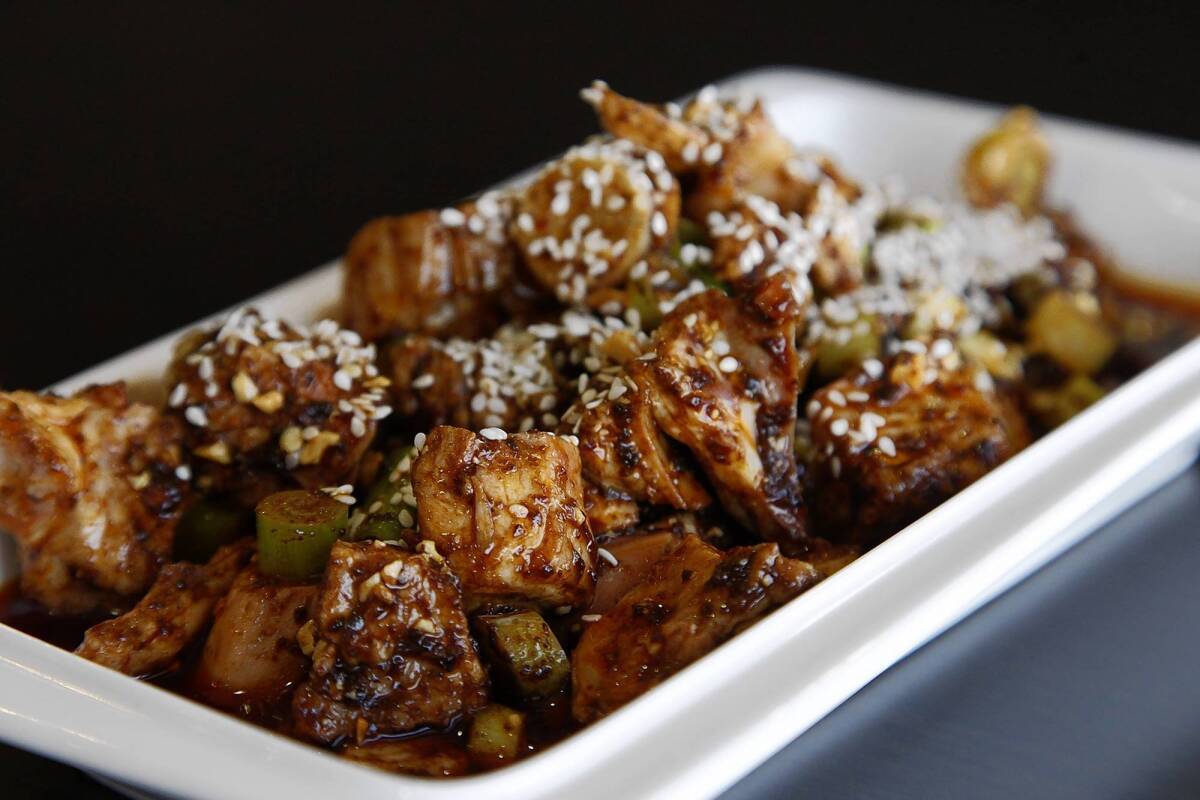
If you follow the peregrinations of local Chinese kitchens, you’ve probably been hearing a bit about Chengdu Taste lately, a new restaurant specializing in the dishes of its namesake city that was pretty much acclaimed as the best Sichuan restaurant in town from the first days of its opening.
When I noted the unavailability of an appetizer translated as “Diced Rabbit With Younger Sister’s Secret Recipe,” the San Gabriel Valley cognoscenti knew what I was referring to even without a mention of the restaurant’s name, and I was sent links to recipes, to articles noting the dish’s ubiquity in Chengdu and a short biography of the woman who invented it. (According to Fuchsia Dunlop, second-sister rabbit cubes were popular enough to inspire a Chengdu poet to compose an ode in its honor.) The restaurant itself tweeted to say that it was going to start making the dish. Finally, the SGV was to be freed from the tyranny of Sichuan cooks preparing only the cuisine of Chongqing.
Chengdu Taste occupies what was for years an Alhambra Shanghainese restaurant whose English name, displayed neither on the storefront nor on the menu, was apparently Wok & Noodle, which specialized in serving vaguely fusty versions of eastern Chinese classics to a crowd that seemed at least a couple of decades older than the average at other restaurants in the San Gabriel Valley — if you were a Chinese American kid who hung out at Luscious Dumplings and Half and Half, this is where your parents went for braised pork knuckle and seaweed-fried fish. I kind of liked the place, not least because the faded storefront could have passed for a typewriter-repair shop. It changed its name to Golden Shanghai a year or two ago, and I’m not sure I ever noticed.
As Chengdu Taste, the dining room has been streamlined and lightened, opened up to the street a bit, and furnished with red paint, track lighting and coffee-cup-emblazoned chairs that were probably once intended for an espresso bar. It’s about as sleek as Valley Boulevard storefronts ever get.
If your experience of Sichuan food is mostly from the Chongqing-style places that have popped up in the San Gabriel Valley in the last few years, you will probably find this Chengdu-style cooking lighter, cleaner and less likely to wake you up in the middle of the night with chile-oil induced nightmares. The food is still quite spicy, flavored with a vast array of fresh, dried, pickled and ground chiles, but the vivid scent of Sichuan peppercorn comes to the front in quite a few dishes, and the overwhelming sensation, even in dishes common to both kinds of restaurants, like the sliced beef in chile oil called fu qi fei pian, mapo tofu, or the chile-accented room-temperature noodles called dan dan mian, is of numbness rather than pain.
When you order both Numb-Taste Wonton and boiled fish with green pepper sauce, the waiter may well bring out the latter dish first, a huge bowl of filets submerged in a broth whose upper inch includes sliced serrano chiles, a big handful of Sichuan peppercorns and lots of peppery oil, because he believes that the sauce on the floppy, delicate dumplings will obliterate your ability to taste the subtleties in the fish. The spectacularly tender fish is numbing enough (you’re not supposed to drink the broth), but the almost electric charge of the peppercorns brings out the flavor of the filets and the chiles — the taste flits around your lips and tongue with the weird vibrancy of a flashing Las Vegas sign — where the pepper sauce with the wonton obliterates everything in its path, like a mysteriously pleasurable punch in the mouth. Sichuan pepper is said to alleviate tooth pain, and I have no reason to doubt it.
At some point you may realize that most of the Chinese families in the dining room are enjoying hot pot, but unless you are inclined to dig through vast metal bowls of gizzards, sliced pig intestines and cubes of congealed blood on your way to the cauliflower and lotus root, it may not be the dish for you. The fried chicken chunks with pepper are coated with a delicious, tangy sauce studded with hot green chiles, but you should be aware that the only bits you are likely to find recognizable are the backbone and some toes.
There is so much to taste on the menu here that even half a dozen visits isn’t quite enough to exhaust the menu. As soon as you check stewed ribs in earthen pot, cumin-spiked mutton threaded onto toothpicks, deeply smoky tea-flavored duck and garlic leeks sauteed with dense house-cured bacon off your list, you realize that you still have the sauteed root vegetable houttuynia, griddle-cooked bullfrog, and tiny-shape pork with pickled cowpeas yet to try. Sliced fish with tofu pudding is a composition of filets arranged over fresh, soft bean curd and swamped with scarlet chile oil; flour-steamed pork is dredged with chile-laced ground rice, then steamed in a bowl until the texture of the meat and the porridge become one. And there’s that Cold Diced Rabbit With Younger Sister’s Secret Recipe: utterly bony, buzzing with salty, fermented heat.
At least once, you should try the ice powder, a kind of vegetable thickener the restaurant brings in from Chengdu that transforms sweet liquid into a barely set, tremulous mass — they claim they’re the only kitchen outside Sichuan to feature it. Is that canned fruit cocktail on top of the ice powder? Why, yes, it is.
Chengdu Taste
Just as spicy, but a lighter, cleaner and infinitely more numbing look at Sichuan cooking.
Location: 828 W. Valley Blvd., Alhambra, (626) 588-2284
Prices: Cold dishes, $7.99-$10.99; noodles, $5.99-$7.99; main dishes, $7.99-$18.99
Details: Open 11 a.m. to 9:30 p.m. daily. Cash only. No alcohol. Street parking. Takeout.
Best dishes: Diced Rabbit With Younger Sister’s Secret Recipe, couple’s sliced beef in chile sauce, Numb-Taste Wonton; dan dan mian; boiled beef with green pepper sauce, sliced fish with tofu pudding, rice flour-steamed pork, Toothpick Mutton.
More to Read
Eat your way across L.A.
Get our weekly Tasting Notes newsletter for reviews, news and more.
You may occasionally receive promotional content from the Los Angeles Times.
